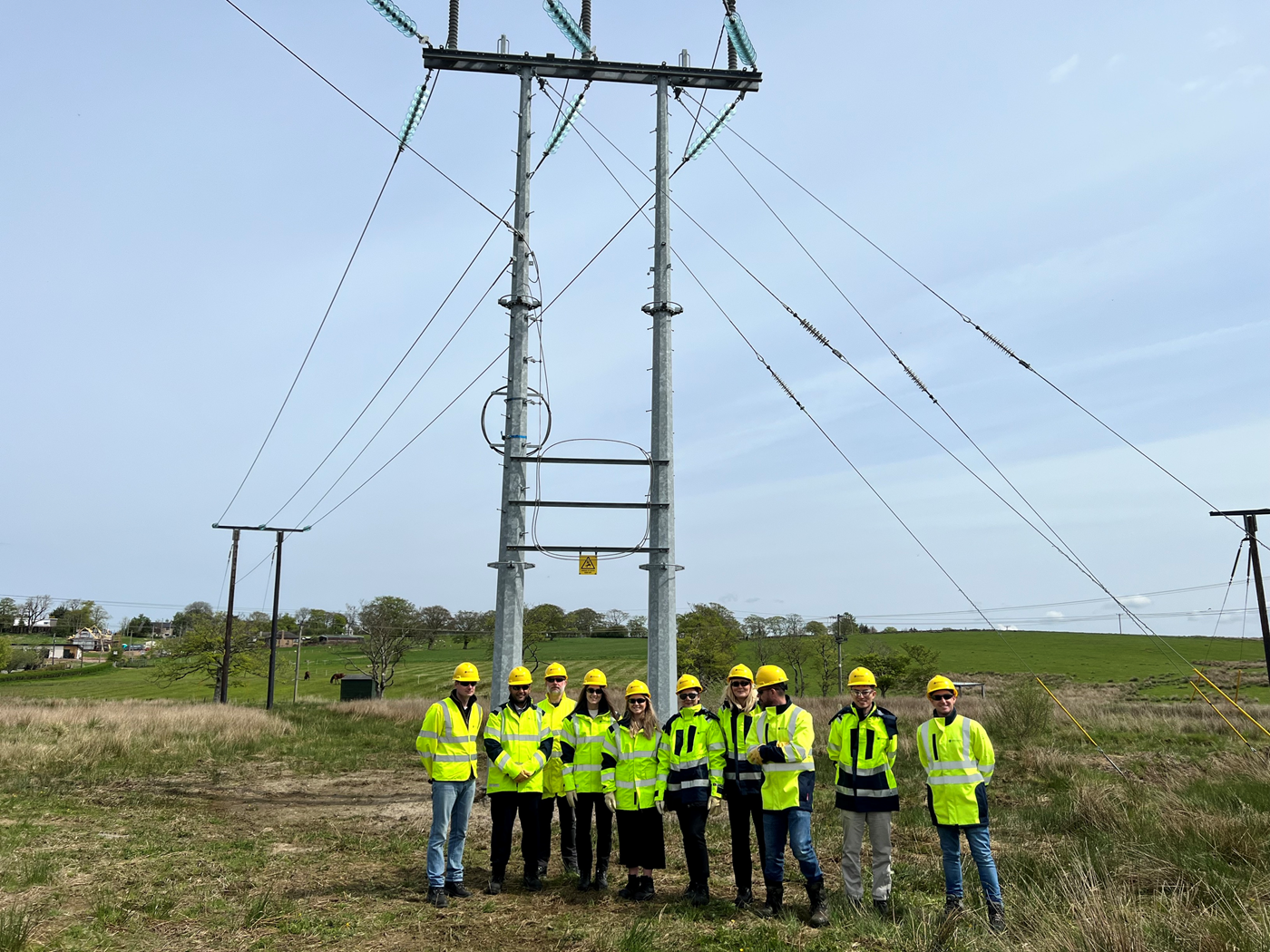Spotlight on Innovation: First look at our Low Profile 132kV Steel Pole design
SSEN Transmission’s Innovation team headed out for the day to check out the new prototype design for our Network Innovation Allowance (NIA) Low Profile 132kV Steel Poles project.
Over the next five years, SSEN Transmission will be ramping up the number of grid connections to renewable sources of energy, supporting the energy system transition and supplying clean energy to homes and businesses across the UK.
The NIA-funded Low-Profile 132kV Steel Pole Project kicked off in January 2022. The aim was to create a new innovative and stronger design for overhead powerlines at altitudes above 300m.
Right now, wooden poles are unable to carry large electrical capacity or function optimally at high altitudes, with the only suitable alternative to meet these demands being large steel structures such as lattice towers or NeSTS steel poles. These alternatives can be costly and often have time constraints associated with their construction programmes.
Our Innovation team and Overhead Line team have been working alongside the project contractors, Energyline, Norpower, and PLPC to develop the steel pole prototype that is similar in design to wooden overhead lines, with as limited a visual impact on the landscape as possible.
While similar in design, the new steel poles will be more resilient in adverse weather conditions, they’ll provide an environmentally-friendly alternative to large structures, and will have a reduced construction programme.
Over the last year, significant progress has been made in the research, design methodology and development of the prototype steel poles. The design minimises the amount of steel required to construct poles, compared to other large structures, improves safety inputs for operatives, and completely removes the need for concrete and access tracks during construction, as foundations are buried directly in the soil.
Connor Duncan, Senior Overhead Line Engineer at SSEN Transmission, said:
“This has been a really exciting project to be involved in. Not only has it been a great opportunity to connect green energy more efficiently, but it has also provided the chance to offer improvements to the safety of the operatives who will be working on the structures.”
“We’ve achieved this by including additional attachment points for fall arrest systems, handles to ease the transition from the pole to the crossarm when climbing, and additional working space on the crossarms of the structures.”
With two prototype overhead lines erected, project testing is set to get underway this summer. In addition, we have identified projects on our network which will look to use the new design in 2024.
Innovation has a critical role to play in delivering our future network whilst continuing to deliver network reliability and value for our customers. Explore our portfolio of innovation projects on our website.
